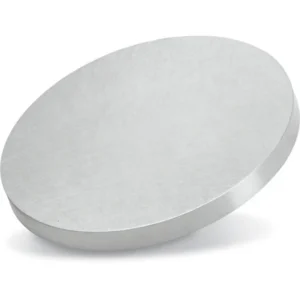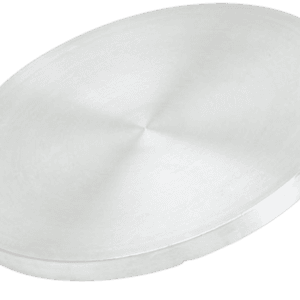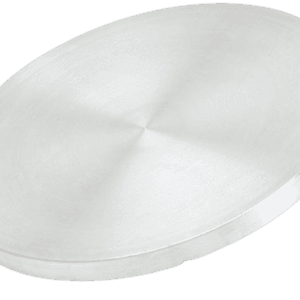Copper (II) Telluride Sputtering Target Description
Copper (II) Telluride Sputtering Targets, supplied by TFM, are engineered with optimal density and minimal average grain size, making them ideal for applications in the semiconductor, electronics, optics, and photonics industries. These targets are essential in the sputtering process, where high-energy ions bombard the target material, causing atoms or molecules to be ejected and deposited as a thin film onto a substrate.
Copper (II) Telluride (CuTe) is a semiconductor material known for its intermediate electrical conductivity, sitting between that of a conductor and an insulator. Notably, its resistivity decreases as temperature increases, making it a valuable material for temperature-sensitive applications.
Related Product: Copper Sputtering Target, Copper Oxide Sputtering Target
Copper (II) Telluride Sputtering Target Specifications
| Compound Formula | CuTe |
| Molecular Weight | 191.15 |
| Appearance | Black Target |
| Melting Point | 1125℃ |
| Density | 7.1 g/cm3 |
| Available Sizes | Dia.: 1.0″, 2.0″, 3.0″, 4.0″, 5.0″, 6.0″
Thick: 0.125″, 0.250″ |
Copper (II) Telluride Sputtering Target Handling Notes
Indium bonding is advised for the Copper (II) Telluride Sputtering Target due to certain characteristics that make it challenging for sputtering, such as brittleness and low thermal conductivity. This material is prone to thermal shock, making the indium bonding process beneficial for enhancing its stability and performance during sputtering.
Copper (II) Telluride Sputtering Target Application
Copper (II) Telluride Sputtering Targets are utilized in electron beam evaporation coating and magnetron sputtering coating, leveraging their high purity, high density, high conductivity, and excellent crystalline properties. These targets are particularly valuable in semiconductor-related fields due to their unique electrical properties.
Additionally, Copper (II) Telluride Sputtering Targets are used to prepare thin films that exhibit high transmittance, high reflectivity, and high conductivity. These characteristics make them ideal for applications in solar cells, optoelectronic devices, and other advanced technologies.
Copper (II) Telluride Sputtering Target Packaging
Our Copper (II) Telluride Sputtering Target is meticulously handled during storage and transportation to ensure that the quality of our products is preserved in their original condition.


 MSDS File
MSDS File



Reviews
There are no reviews yet.